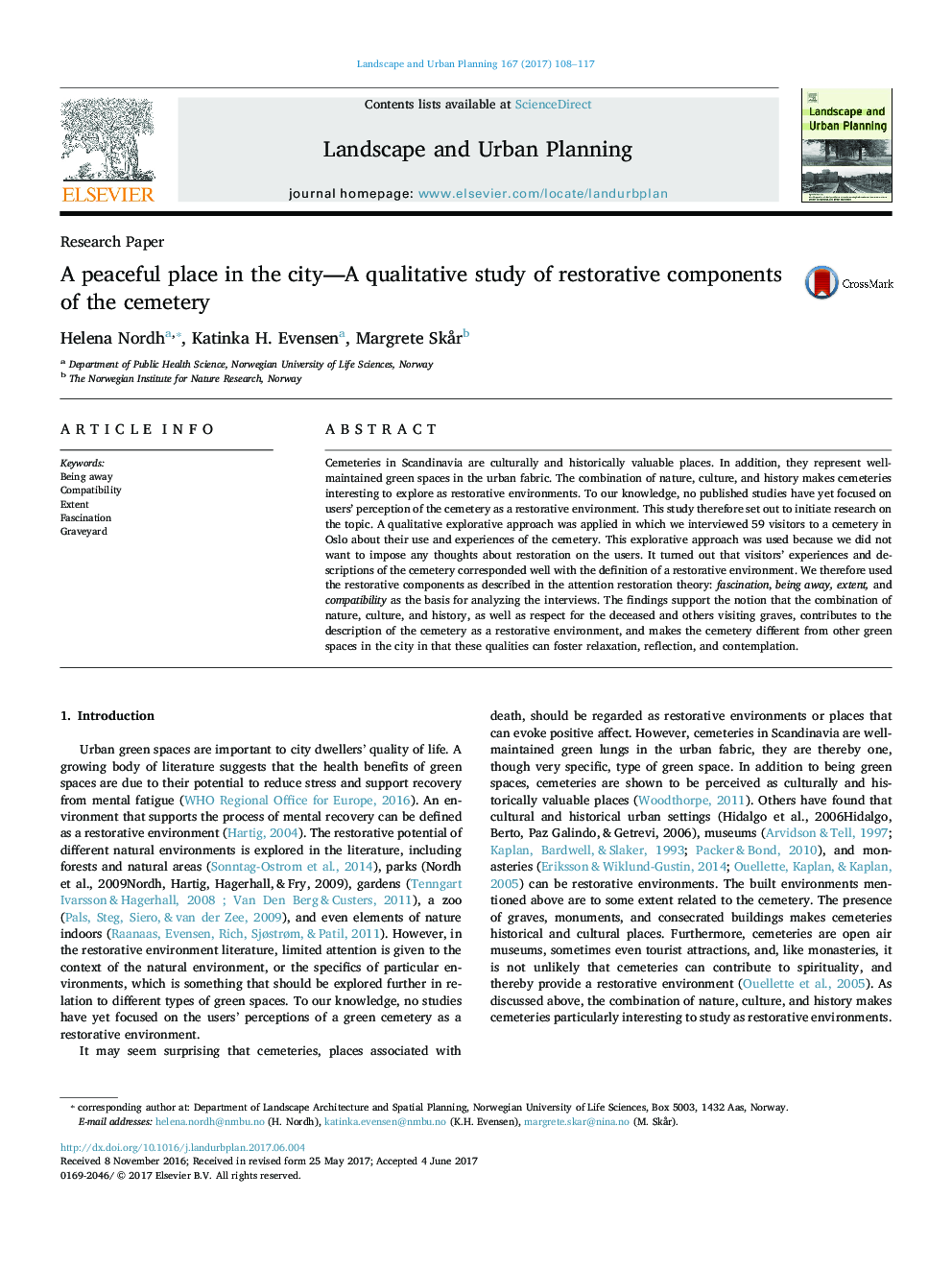| Article ID | Journal | Published Year | Pages | File Type |
|---|---|---|---|---|
| 5114942 | Landscape and Urban Planning | 2017 | 10 Pages |
Abstract
Cemeteries in Scandinavia are culturally and historically valuable places. In addition, they represent well-maintained green spaces in the urban fabric. The combination of nature, culture, and history makes cemeteries interesting to explore as restorative environments. To our knowledge, no published studies have yet focused on users' perception of the cemetery as a restorative environment. This study therefore set out to initiate research on the topic. A qualitative explorative approach was applied in which we interviewed 59 visitors to a cemetery in Oslo about their use and experiences of the cemetery. This explorative approach was used because we did not want to impose any thoughts about restoration on the users. It turned out that visitors' experiences and descriptions of the cemetery corresponded well with the definition of a restorative environment. We therefore used the restorative components as described in the attention restoration theory: fascination, being away, extent, and compatibility as the basis for analyzing the interviews. The findings support the notion that the combination of nature, culture, and history, as well as respect for the deceased and others visiting graves, contributes to the description of the cemetery as a restorative environment, and makes the cemetery different from other green spaces in the city in that these qualities can foster relaxation, reflection, and contemplation.
Keywords
Related Topics
Life Sciences
Agricultural and Biological Sciences
Ecology, Evolution, Behavior and Systematics
Authors
Helena Nordh, Katinka H. Evensen, Margrete Skår,
